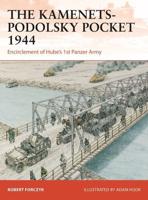Publisher's Synopsis
This historic book may have numerous typos and missing text. Purchasers can usually download a free scanned copy of the original book (without typos) from the publisher. Not indexed. Not illustrated. 1872 edition. Excerpt: ... HISTORICAL INTRODUCTION. Amid so much that is mythic, uncertain, or matter of controversy, in the early history of Scotland, it may be held as unquestionable that the Scots, from whom the country took its name, had their original seat in Ireland, from whence they migrated to Scotland; and that a line of kings of Scottish race ruled in this country from the middle of the ninth to the early part of the eleventh centuries. The era of the establishment of this Scottish dynasty was the year 850, and it terminated, by the death of the last king of Scottish race, in the year 1034. It is under this line of Scottish kings that we can trace the rise and gradual formation of the Scottish monarchy, and that we find the first appearance of those ancient chronicles professing to give the succession, and chronology, of the earlier kings, supposed to have reigned in Scotland prior to the establishment of this dynasty. The direct rule of this line of kings of Scottish descent, and the main seat of their government, was confined to the districts extending from the Firth of Forth to the river Spey. Beyond the river Spey, on the north, lay the extensive district termed Moravia, comprehending the modern counties of Elgin, Nairn, Inverness, and the eastern part of Ross-shire. On the west, and separated from these districts by the great chain of Drumalban or the backbone of Scotland, was Ergadia, Earragaidhel or Argyle, extending from the Firth of Clyde and Loch Long in the south to the point of Coigeach and Loch Enard in the north-west corner of Ross-shire, and forming the western seaboard of Scotland. Over these districts, the kings of this race may have had a nominal sway, but they do not seem to have been incorporated with their proper kingdom. The...









